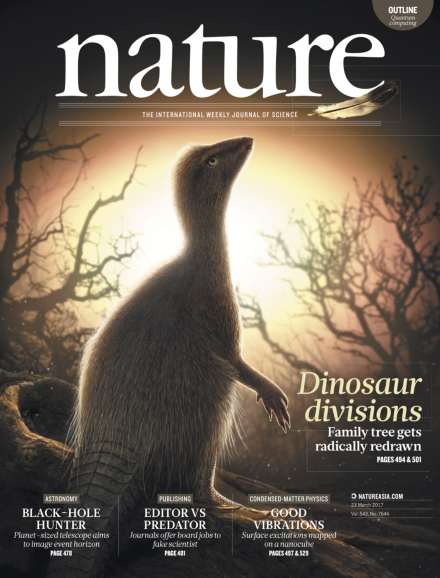Volume 543 Issue 7646, 23 March 2017
Editorial
World View
Research Highlights
Seven Days
News
Correction
News Feature
Comment
Books & Arts
Correspondence
Obituary
News & Views
Article
Letter
Feature
Q&A
Futures
Outline
-
Quantum computing: towards reality
Nature Outline:
-
Quantum leaps, bit by bit
Nature Outline:
Nature Index
-
Striving for a research renaissance
Nature Index:
-
Q&A: Branching out in tough times
Nature Index:
-
Comment: Drawing a new bottom line
Nature Index:
-
Dusting off outdated patterns
Nature Index:
-
Engineering a gender bias
Nature Index:
-
A guide to the Nature Index
Nature Index:

